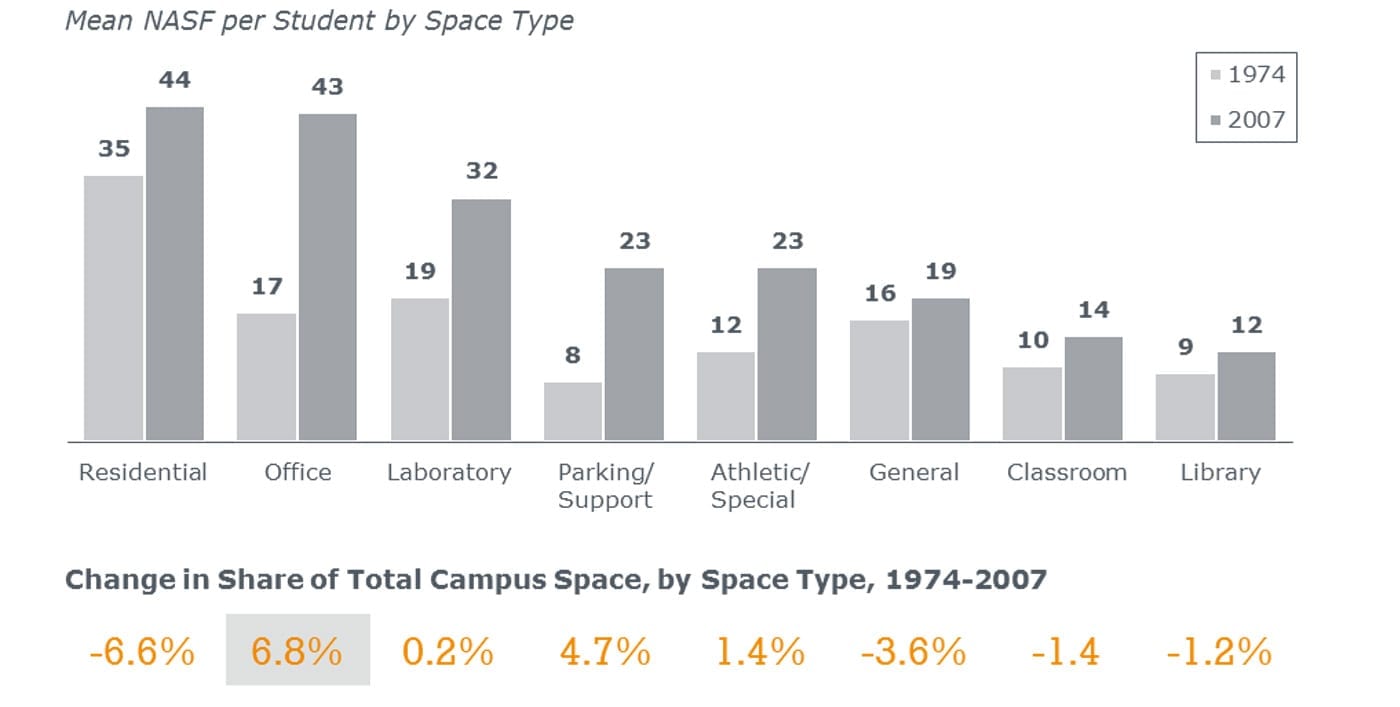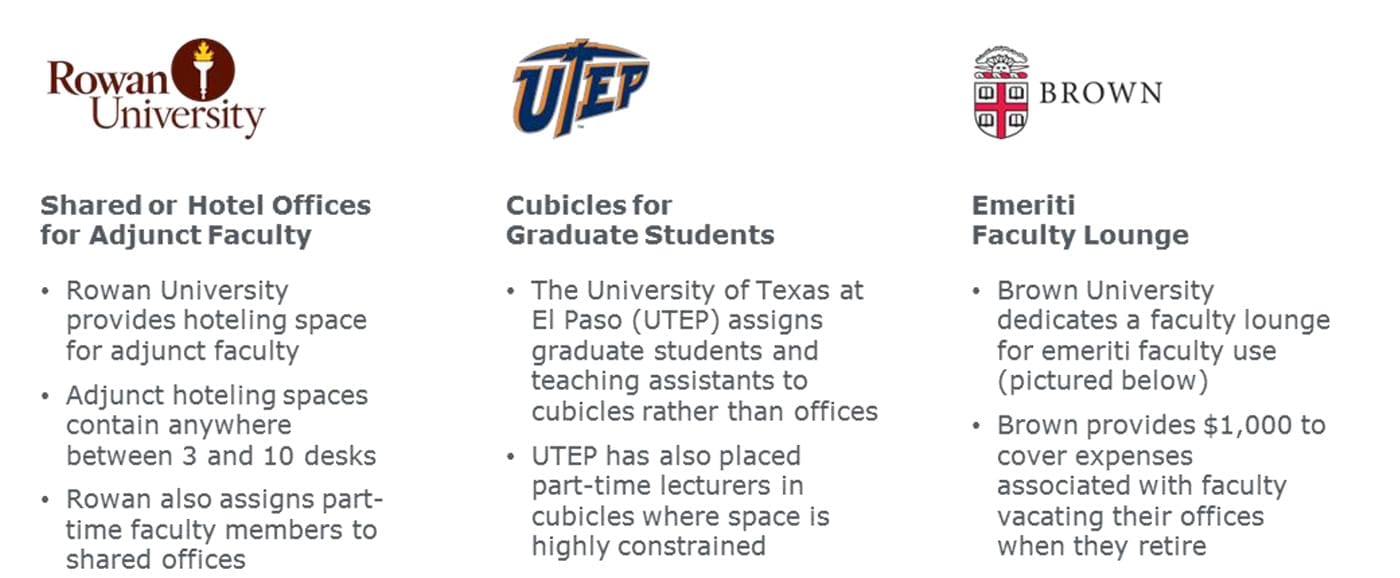While most institutions guarantee private offices for full-time faculty members, office space remains one of the most underutilized spaces on campus. Generous space protocols often grant private offices to most employees, regardless of how much time they spend on campus. Other institutions have no protocols at all, or struggle to enforce current space utilization rules. As a result, part-time, emeriti, and adjunct faculty often have their own offices, and full-time faculty occasionally have multiple offices.
Offices are the fastest-growing space on campus
These inconsistent policies prevent facilities leaders from fully realizing their institution’s space needs, as office space offers one of the biggest opportunities to improve utilization. As the chart below shows, all types of space are increasing on a per student basis. However, between 1974 and 2007, office space increased more than any other type of campus space, at a rate of 6.8%.
Growth in Space per Student

Although reclaiming private office space from tenured faculty is a nonstarter on most campuses, many institutions have managed to reclaim space from non-tenured faculty.
Our research has uncovered three opportunities to eliminate private offices for non-tenured faculty, and how your institution can free up underutilized office space to reduce the demand for offices in new construction.
Learn how your peers are making better use of existing space
Opportunity 1: Move non-tenured staff to higher-density spaces
The first enforceable opportunity to reduce office space on campus is to move non-tenured instructors to more dense office space. Three institutions have done this particularly well.
- Rowan University assigns all adjunct faculty to hoteling spaces and shared offices with up to 10 desks.
- The University of Texas El Paso assigns graduate assistants to cubicles rather than closed offices. They also put part-time lecturers in cubicles when facing a space crunch.
- Brown University replaced emeriti faculty offices with an emeriti lounge. Brown also provides up to $1,000 to help emeriti faculty move out of their private office.
Known Methods to Reduce Number of Unnecessary Private Offices

Opportunity 2: Restrict duplicate office assignments
The second opportunity to reduce office space on campus is reduce the number of faculty members with multiple offices. Institutions have approached this opportunity in two ways. One institution quantified the problem with a formal survey, which found an average of 1.2 offices per faculty member. Leaders now work with deans on a case-by-case basis to eliminate duplicate office assignments.
Meanwhile, UNC Charlotte restricted the proliferation of multiple faculty offices with an office-free building. To maximize classroom space in a new continuing education building, the facilities leader and provost at UNC Charlotte jointly decided not to include private offices in the design of a new building for the college of continuing and online education.
This strategy was possible because faculty members who teach at the downtown campus already have offices on the main campus. Instead, the building provides hoteling space for faculty members to use when they visit the downtown campus.
Opportunity 3: Shift administrative units to open offices
The third enforceable opportunity to reduce office space on campus is to shift administrative staff from private offices to open office layouts. While some higher-level staff members will need to keep private offices, the majority of administrative staff can relocate to more open workstations. The Facilities department at the University of Toronto pioneered the shift to cubicle space.
In the previous layout, many employees sat in private offices. Much of the open space was dedicated to high filing cabinets, obstructing natural light from reaching the central cubes. In the new layout, low-walled cubes are positioned on the perimeter of the floor to maximize the natural light on staff desks. Toronto also installed a variety of formal and informal collaborative spaces positioned in the center of the floor.
An open-office layout has yielded significant space savings for the University of Toronto. The new layout has reduced the number of private offices in the Facilities department by 30% and decreased average workstation size by 25%. In total, the unit reduced its gross square footage by 10%.
More importantly, Facilities employees were satisfied with the move, demonstrating that if done correctly, a move to an open office can improve both space efficiency and employee satisfaction. The staff reported higher productivity, increased teamwork, and more collaboration among the different parts of the Facilities unit. Now, other administrative units at the University of Toronto are following suit.

